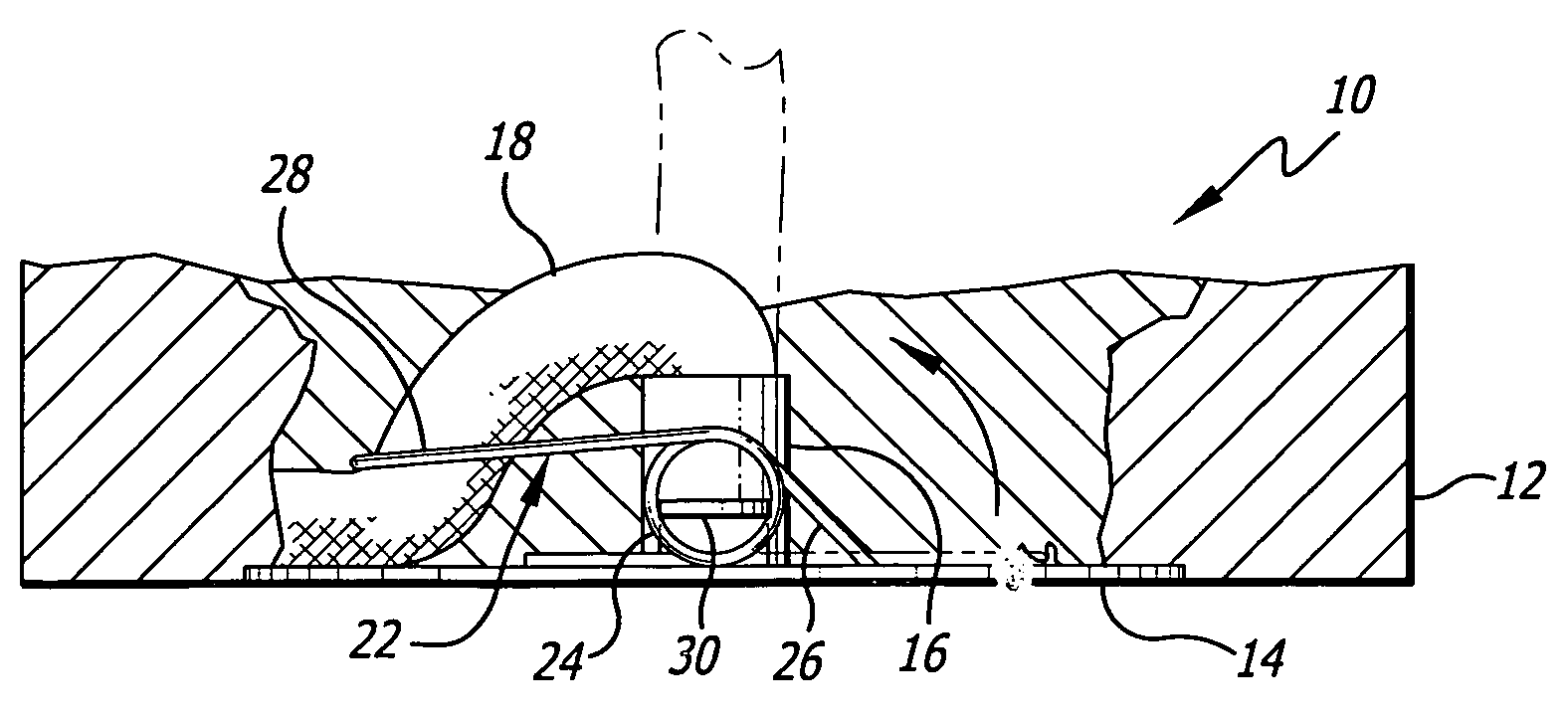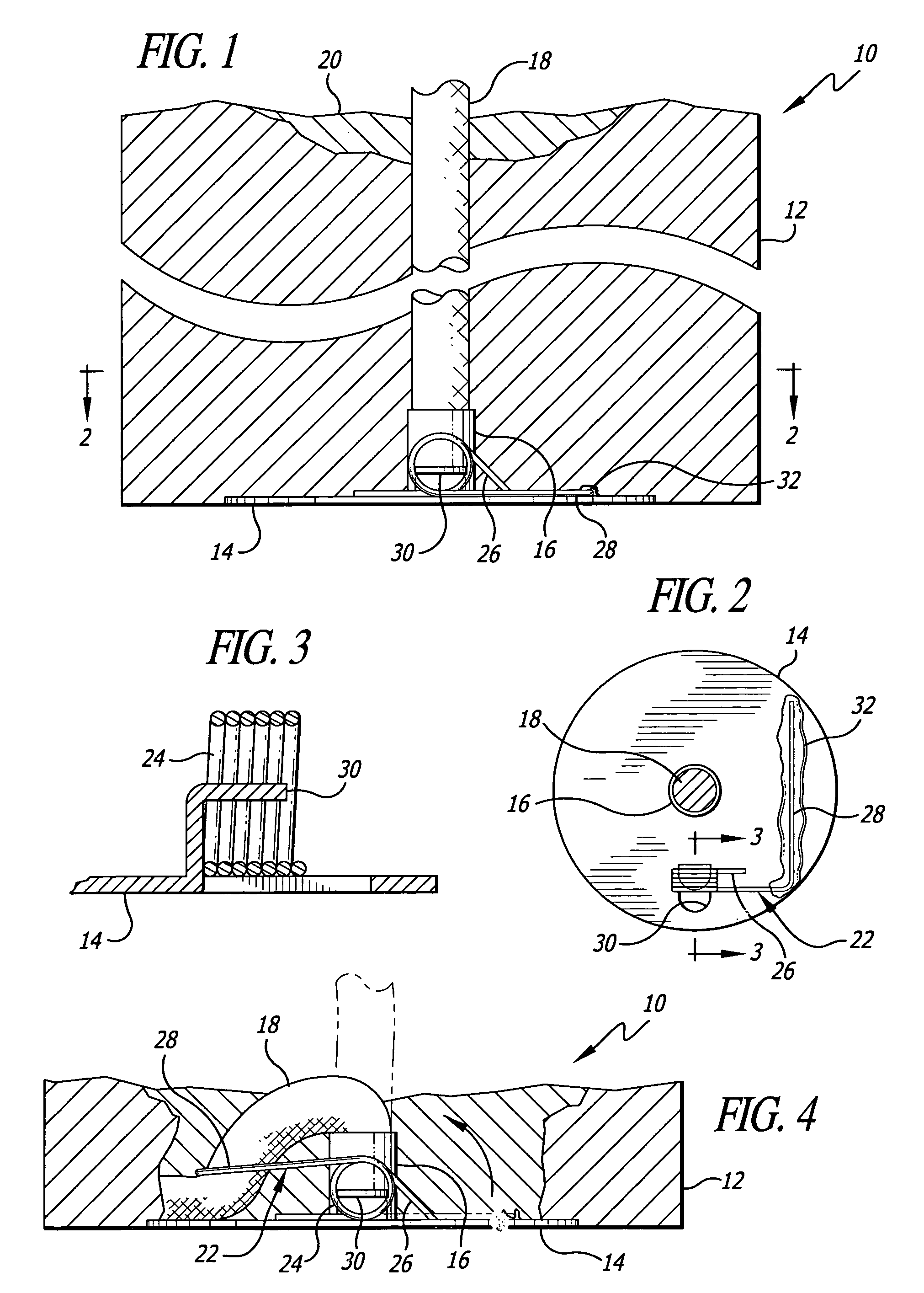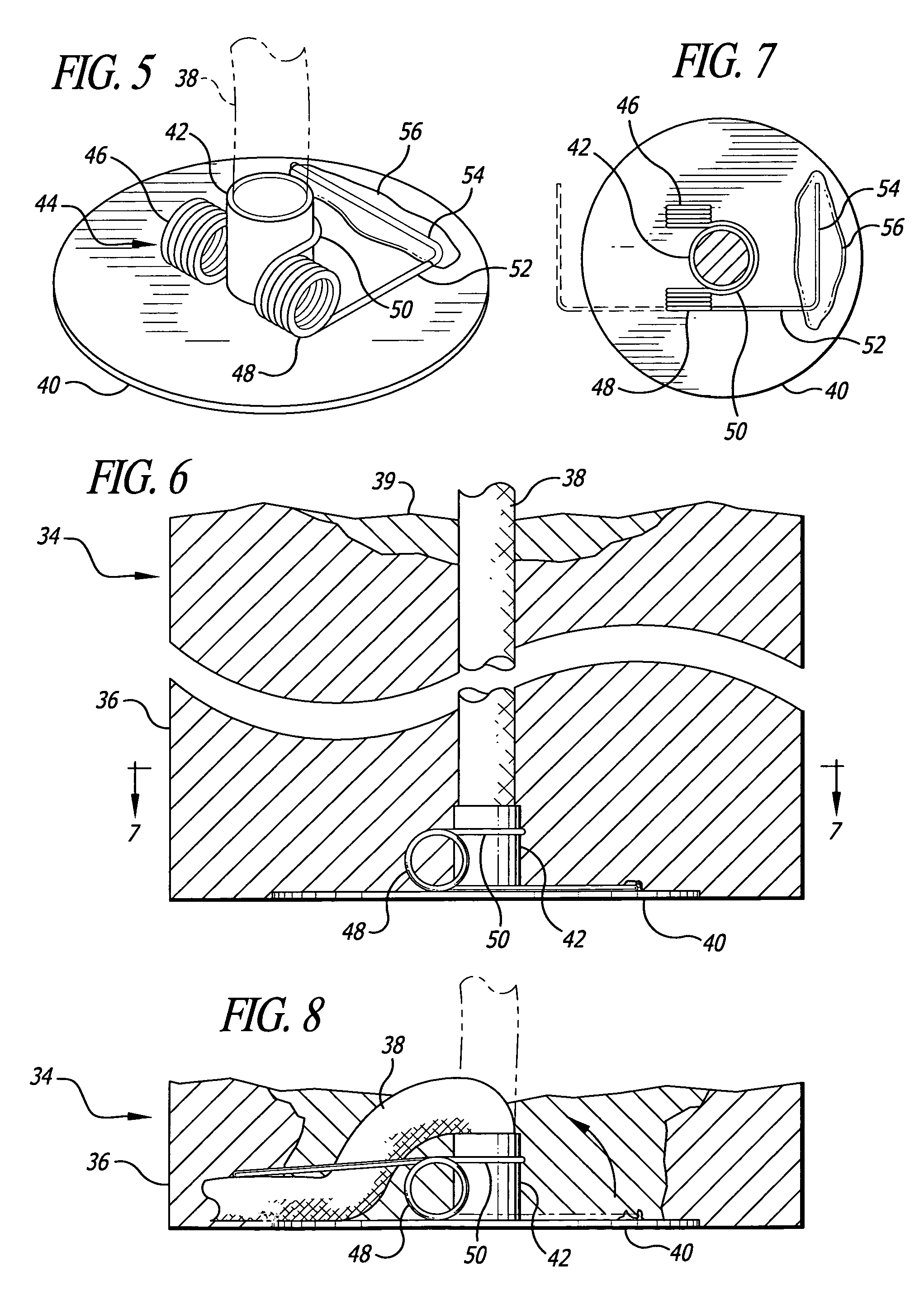Candle wick snuffer
- Summary
- Abstract
- Description
- Claims
- Application Information
AI Technical Summary
Benefits of technology
Problems solved by technology
Method used
Image
Examples
Embodiment Construction
[0024]Candle 10, shown in FIGS. 1 and 4, is formed of a body of solid fuel 12. At the bottom of the candle 12 is a baseplate 14, which is seen in FIGS. 1, 2, 3 and 4. The baseplate has a nose or collar 16 formed thereon, usually by punching up from the bottom. The collar can be of different heights, depending on the method of formation. Furthermore, it may not even be in the form of a collar, but a punchout in the baseplate to which a wick can be attached. The purpose of the collar is to hold the bottom end of wick 18 onto the baseplate, which secures the wick in place. The structure is known in the trade as a “wick sustainer.” The wick may be positioned within the body of the candle by any conventional means, including forming the body around the wick or forming the fuel body, making a hole therethrough and placing the wick in the hole. When the wick is lit, the heat from the flame forms the liquid fuel pool 20. The liquid fuel moves up the wick by means of capillary action. The li...
PUM
 Login to View More
Login to View More Abstract
Description
Claims
Application Information
 Login to View More
Login to View More - R&D Engineer
- R&D Manager
- IP Professional
- Industry Leading Data Capabilities
- Powerful AI technology
- Patent DNA Extraction
Browse by: Latest US Patents, China's latest patents, Technical Efficacy Thesaurus, Application Domain, Technology Topic, Popular Technical Reports.
© 2024 PatSnap. All rights reserved.Legal|Privacy policy|Modern Slavery Act Transparency Statement|Sitemap|About US| Contact US: help@patsnap.com










